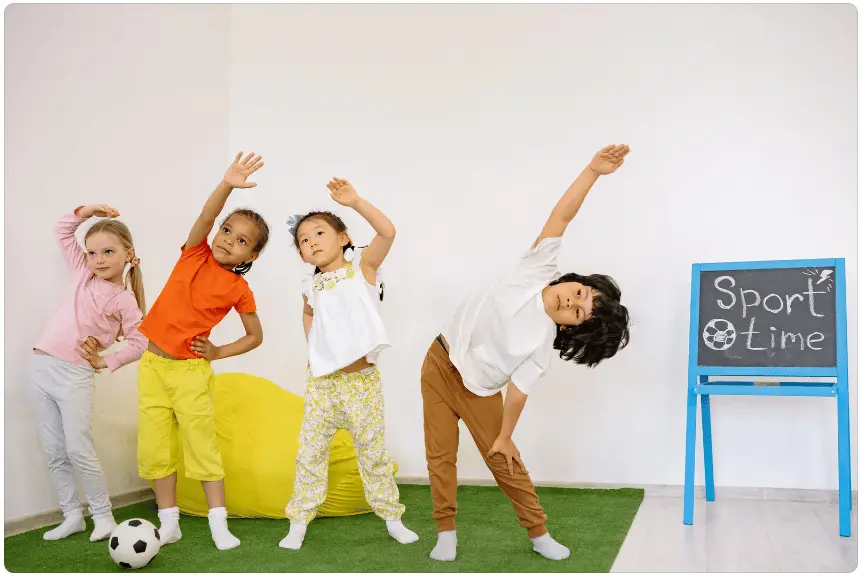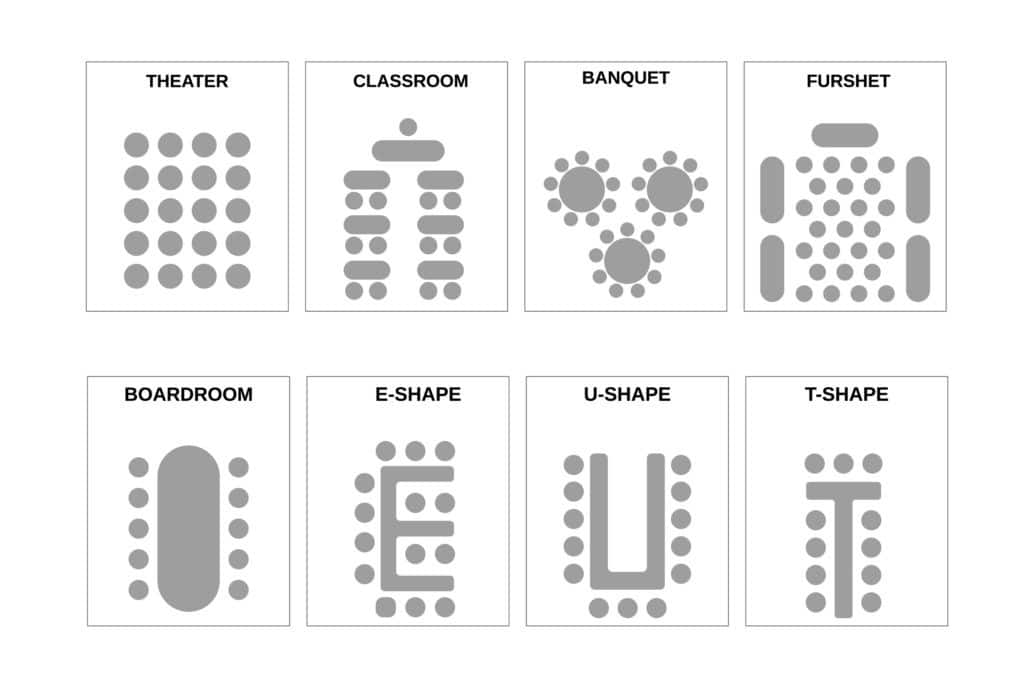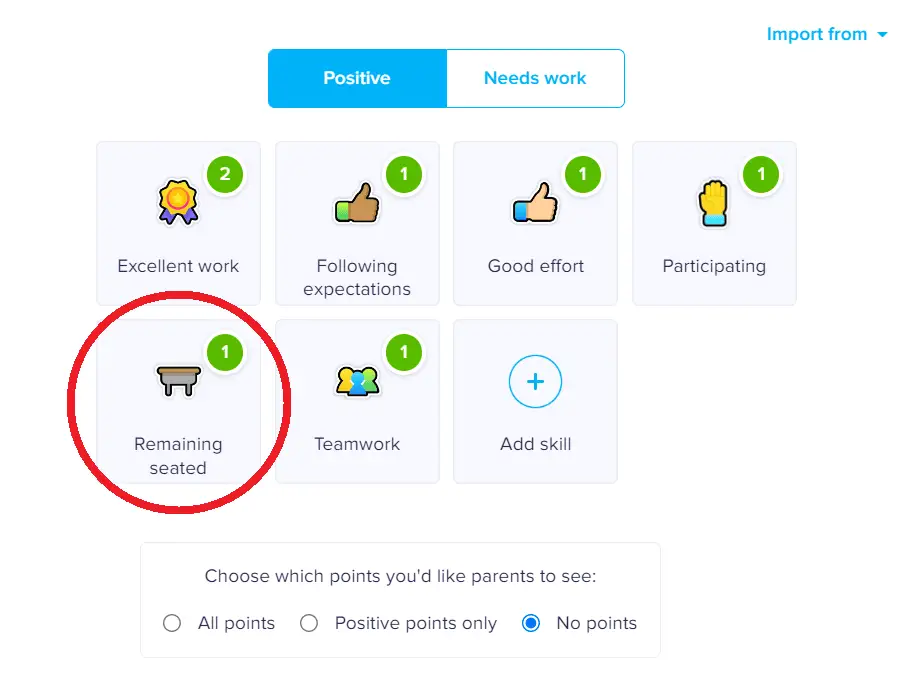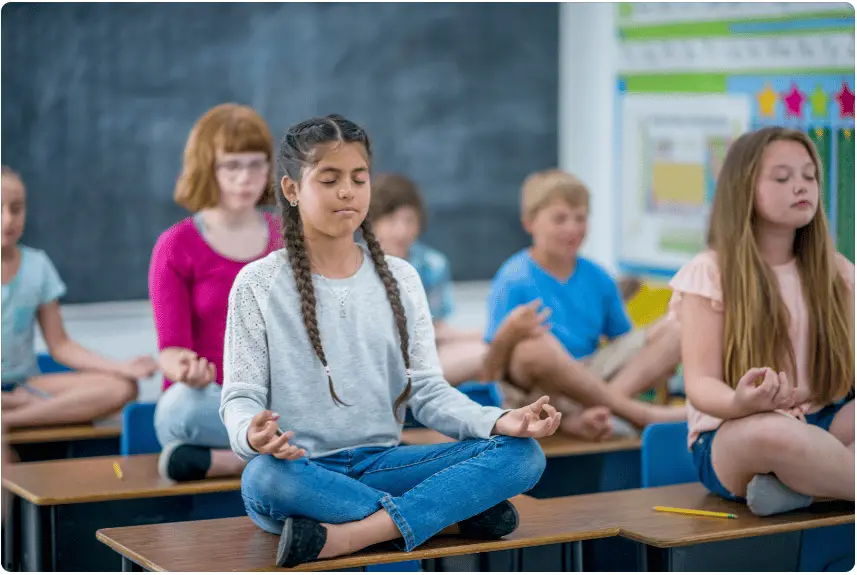Whether it’s high energy levels, a lack of concentration, or just impulsive behavior, keeping students in their seats is often challenging. Luckily, there are various strategies you can implement to keep your students seated.
Here’s how to keep students in their seats:
- Explain the importance of staying seated.
- Keep students busy and engaged.
- Have them work in groups.
- Have specific times where they can leave their seats.
- Change seating arrangements frequently.
- Incentivize them with rewards
- Don’t be afraid to be firm.
- Use warm-ups to get their energy out.
- Make time for meditation.
These tips will be discussed in greater detail, so keep reading. By the end of the article, you will have the know-how and the confidence to keep your students seated and still.
1. Explain the Importance of Staying Seated
Communication is key! Using your words to go through the expectations with students is an obvious yet powerful way to get them to listen.
You must talk to your students and let them know how important it is to remain seated and focused. Although this technique won’t work for every student, it should eventually sink in if you keep reinforcing the idea.
Your students must understand that failure to remain in their seats is a health and safety hazard. Standing or wandering around the classroom increases the likelihood of an accident occurring.

As their teacher, you are responsible for setting the expectations and implementing them every day. Being consistent with your words and actions will show the students that you are not easily swayed, so they will respect your authority more.
Sometimes, I like to remind the class of the importance of staying seated in a humorous and entertaining way. For instance, I act out a story of a fictional student who always left their seat and ended up bumping and knocking down things around the class. The students find my slap-stick performance hilarious, which is a nice novelty, but I always conclude by emphasizing the point that for a safer environment, we should remain in our seats.
2. Keep Students Busy and Engaged
One of the best ways to keep your students in their seats is to keep them busy. This way, they won’t have the time to leave their seats as they’ll be so focused on their work or other activities.
No matter what it is, try to make it as educational and fun as possible to minimize the chances of anyone wanting to leave their seats.
If you keep your students engaged in class, they may be less likely to leave their seats. This can be achieved in the following ways:
Use Educational Games
Teaching through play is an excellent way to engage students. Since games are fun and entertaining, students generally enjoy playing educational games.
Depending on the game, the students can participate using their hands, bodies, or voices, just as long as they stay seated.
Dry-wipe boards and pens are excellent tools to have. You can ask questions and have the students write their responses on the boards. This ensures that all students can potentially participate.

If the class has access to technological devices such as laptops or tablets, take advantage of the numerous fun games that can be found online. Here are some tried and tested websites that my students adore:
- Kahoot.com
- Blooket.com
- Gimkit.com
- Prodigygame.com
Tell Engaging Stories
If you’re doing a lesson and there’s an exciting story relating to it, be sure to tell it.
If you can’t find a story that relates to the lesson topic, get creative by using any well-known fairy tale and connecting it to your teaching. Your students will appreciate your effort and enthusiasm.
Hands-On Activities
Learning through practical, hands-on activities is an excellent way to keep students engaged and in their seats.
For example, if you’re doing a lesson on flowers, you can collect some and give each student a chance to examine them at their tables.
Allowing students to learn by using their hands and seeing things in person is very meaningful. It certainly beats just reading and writing endless paragraphs in textbooks.
Ask Questions
While you keep your students busy with activities and work, you can also ask them many questions to keep them further occupied. Engaging with your students and showing an interest in their thoughts and learning processes will rub off on them.
Your students will be more likely to participate and remain focused if you ask interesting questions. This keeps their minds occupied, which helps prevent them from leaving their seats.
3. Have Them Work in Groups
One way to try and keep your students in their seats is to have them work in teams with the rest of the students at the table. Working with others nearby means they’ll have less of an urge to move around the classroom.

Working in teams also helps students develop their social skills, and these skills are essential for further development. There are many ways to have your students work in groups, such as:
- Educational quizzes: Allowing your students to do educational quizzes in teams can help keep them in their seats. You can read out questions while your students work as a team to find the correct answers.
- Class exercises: Allowing your students to do general class exercises in groups should help them stay seated. This could be any subject, such as math, English, or Social Studies. Since they’ll have to work as a team with those at their table, they won’t have a reason to leave.
- Resource sharing: For example, you could allow two students to share the reading material during a reading task. This means all students will need to be seated, as they’ll have to share their resources with the person beside them.
It’s always good to encourage each table to work together because it gives the students a solid reason to stay seated, and working with their table can be a fun activity in itself.
Also, try to supply each table with the necessary stationery and items so that they do not have to leave their seats to retrieve anything from elsewhere.
4. Have Specific Times Where They Can Leave Their Seats
Expecting your students to be seated all day is not beneficial nor realistic. That’s why giving your students specific times to leave their seats – besides recess and lunchtime – is a good idea.
This also promotes good health, as they are not recommended to sit for long periods. There are different ways to allow your students to leave their seats without disrupting the class.
Here are some examples:
- Class activities: You can allocate a specific time for a fun activity that requires students to leave their seats. The activity “Where do you stand?” is worth trying out. Give the students a dilemma with 2-4 possible choices of response. Allocate each side of the classroom with a possible option and then ask the students to stand on the side they most agree with. Essentially, they are voting with their feet. Once all the students move to show you their preferred option, ask for volunteers to share and explain their choice.
- Social time: Another thing you could try with your students is social time. If you notice that the students are getting overly agitated and restless, you could allocate a few minutes for them to walk around the class, stretch, and communicate with each other.
- Exercise time: You may want to bring your students out for a few minutes to get some fresh air and exercise. Letting them run outside will help them burn energy, making them more tired when they return to class. Hence, they may be less likely to get up from their seats.

Once you implement these suggestions, you should find that students have less desire to leave their seats.
5. Change the Seating Arrangements Frequently
If you keep the seating arrangements the same throughout the year, students will likely get bored and want to leave their seats to experience something new. So, it’s advantageous to freshen things up.
Seating arrangements can affect how students learn, so it’s essential to know how to organize your classroom in the best way possible.
Changing the seating arrangements could include moving tables around or reseating students.
Here is another opportunity for you to get somewhat creative! You can experiment with arranging desks in many different ways until you find one that works best for your class.

You may decide to have the tables together, for example, or to leave the tables separated. This is something you could do daily, weekly, or monthly. Again, gauge how your students respond to these changes and build on this.
Why not practice Student Agency and get feedback from your students on how the classroom environment should look? It is their classroom, after all, so they should also get some say.
Additionally, changes to the seating arrangement are beneficial because it prepares students for life later on, particularly in middle and high school, when they’ll be moving around the school more frequently.
6. Incentivize Them With Rewards
Incentives are a highly effective way of influencing behavior.
Acknowledging and praising students who are meeting expectations will encourage them to continue on the right path. But this positive reinforcement will also inspire the ones who struggle to stay in their seats to be more reflective about their actions.
Verbal feedback is not the only incentive that can be used. Unsurprisingly, children respond remarkably well to physical rewards like prizes and treats.
Students need to work hard to follow your expectations to earn such rewards. You can keep track of this using stars or stickers. Alternatively, a tool that I would recommend is Class Dojo, where students can receive – and lose – dojo points for a number of agreed reasons. Almost always we would include an expectation related to staying seated when asked.

Once students earn a certain number of dojo points, they can receive a reward. For me, the students who have accumulated ten dojo points by the end of the week get to enjoy “free time.”
7. Don’t Be Afraid To Be Firm
Positive reinforcement and rewards are popular strategies with most children. However, you may need to be firm with students from time to time, especially if they are becoming unruly and difficult.
If you have tried the other strategies mentioned in this article but your students are still getting out of their seats and disrupting the flow of the lessons, you need to address the issue more directly. Call them out on their behavior and tell them there will be consequences if things continue.

Often, this warning will be enough to convince students to be more respectful and remain seated.
Maintain Consistency
It’s crucial to maintain consistency when being firm and disciplining your students. You should treat each student equally and keep the classroom rules consistent. This way, you’ll avoid confusion and confrontation.
You’ll also need to be consistent with your punishments. For example, you may have a system where if students get out of their seats without permission, they stay inside for the first five minutes of recess. If you’re looking for other – and more effective – examples of consequences, be sure to read “10 alternatives to taking away recess as punishment.”
Whichever system you put in place, you can’t warn students about it and not implement it. If that’s the rule that you’ve set, then that’s the rule you should stick by. If students see you following through on a consequence, they’ll try harder to stay out of trouble.
8. Use Warm-Ups To Get Them Ready For the Day
Warm-ups are generally done at the start of the school day and involve getting the students’ brains working and ready for the day ahead. This includes putting a problem on the board and having the students work independently or in groups to solve it.
It doesn’t have to be anything complex, as it’s simply an exercise to warm everyone up. Going straight into classwork can often be challenging, making it hard for students to focus. And once they can’t concentrate, they’re more likely to get up from their seats and disrupt the class.
An example of a warm-up may involve a short quiz on what you’ve been teaching over the last few days. Again, it doesn’t have to be anything too serious. Just something to wake everyone up and get them attentive, so they’re less likely to move from their seats.
Here are some other warm-ups you can do with your students to help wake them up and keep them engaged in class:
- A trivial challenge: Giving your students a written challenge is an excellent warm-up method. You don’t want to make it too complex, but you also want them to have to think about the answer. A popular morning challenge in my class is “Countdown,” where I would write a list of random letters on the board, and students have a set time to construct the longest word they can using only the available letters. A fun challenge while also focusing on spelling and vocabulary.
- Recap the learning: If it’s the start of a new week, you could have a conversation about the teaching and learning from the previous week. Go over the key points and be sure to encourage questions. This should get students engaged and keep them seated.
- Puzzle: It may be a good idea to hand out a puzzle for them to complete. It could be a simple word search or a sudoku puzzle. It should do the trick as long as it involves thinking and isn’t too intense.

It’s also good to talk about non-school-related things now and then, especially in the morning, to help everyone get focused and warmed up. This may include asking students if they did anything fun at the weekend or if they have any exciting news to share with the class.
These informal talks are valuable as they help you build better relationships with your students, increasing the likelihood of them remaining in their seats out of respect and admiration for you.
9. Make Time For Meditation
Another excellent way to encourage students to remain seated is by doing meditation.
Studies show that meditation helps heighten focus, so it’s a great idea to do it with your students now and then. It will also help relax your students, making them more likely to stay in their seats.
The meditation process generally involves sitting or laying down and closing your eyes, so doing this with your students ensures they all remain quiet, calm, and in their seats.
Here is a video explaining the scientific power of meditation:
Now, let’s look at meditation techniques you can try with your students to keep them in their seats.
Mindful Breathing
Mindful breathing is an excellent way to treat anxiety, stress, and anger. So, trying it with your students will be greatly useful if they’re constantly getting out of their seats. Make sure all students are comfortably seated, with their eyes preferably closed. Luckily, mindful breathing doesn’t take too long and can be completed in as little as five minutes.

Play Meditation Music
Another good idea is to play some meditation music. This can be anything, as long as it’s relaxing and appropriate for school. Like with the other methods, you can have students close their eyes and sit however they feel comfortable.
Once the music plays, they will relax even more. There is no set time for how long you do this meditation, but I found that 10-15 minutes was the optimum period of time.
With both meditation methods, you should ensure the lights are off, creating a more relaxing ambiance.
Key Takeaways
There are many strategies for you to try to keep students in their seats. The main things are to keep them engaged and to keep reinforcing your expectations.
Doing mental warm-ups and physical exercises at the start of class is also an excellent way to prepare your students to learn.
Finally, meditation is another viable way to relax your students and keep them seated.
You will often have to implement a few of these suggestions before getting to the desired outcome, so stay patient and optimistic!

